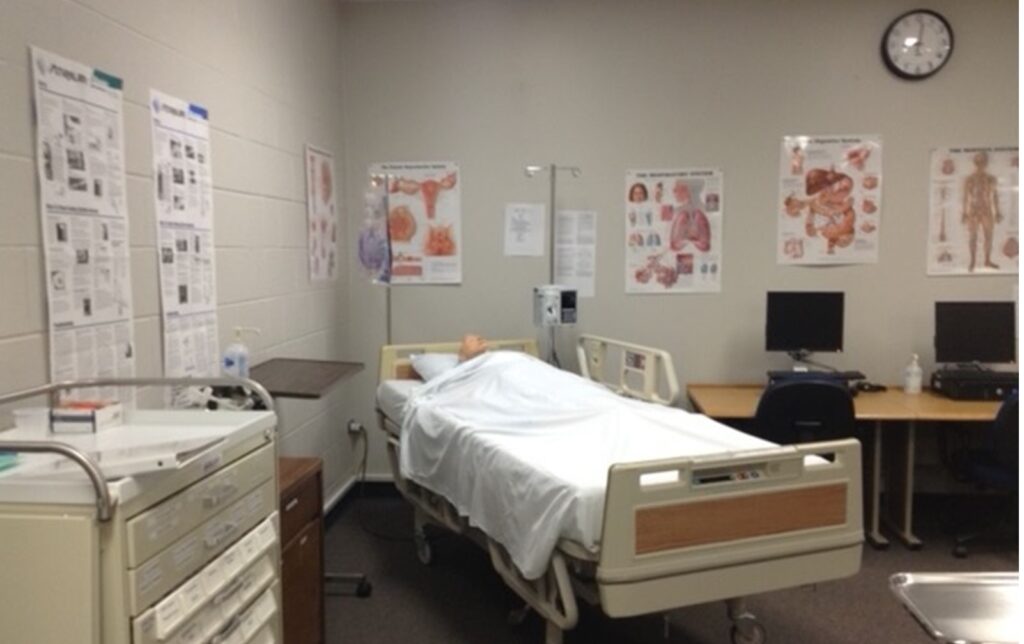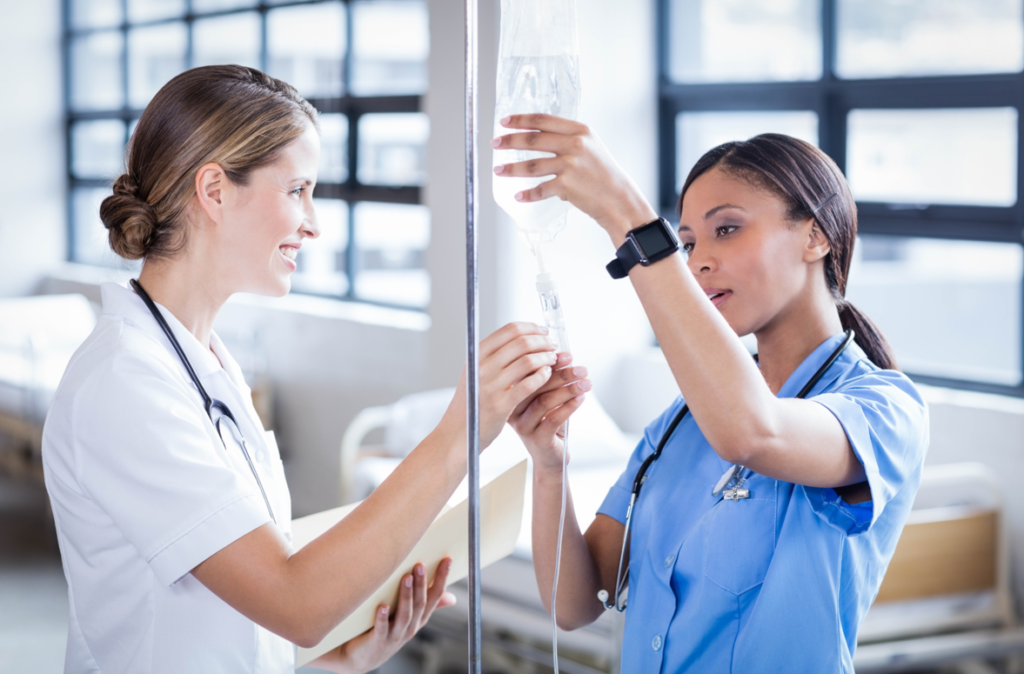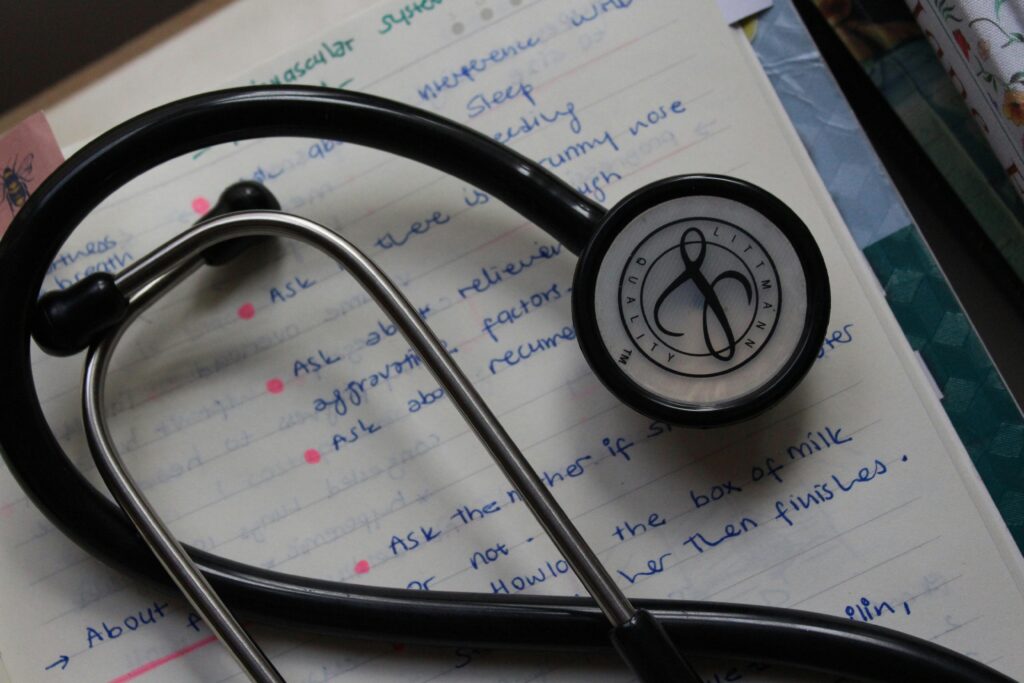Nursing courses blend different course formats: didactic (classroom) classes, skills classes, simulations, and clinical experiences. When thinking about the nurse’s role and the knowledge and skills needed, various formats allow for learning in all learning domains. The three domains of learning are cognitive, psychomotor, and affective. As a nursing student, you will learn about these learning domains as nurses are always teachers for their patients and must ensure they have the knowledge, skills, and attitudes to care for themselves and maintain health successfully. Since Dr. Osler first noted healthcare education is best done via hands-on practice in the early 1900s, and nursing education developed since the days of Florence Nightingale in the 1800s in a manner requiring unique professional education, nursing education has included a multimodal plan for preparation.
Let’s look at how nursing courses allow students to meet the three learning domains. We’ll start with the cognitive domain. The supportive courses, electives, and nursing courses will all require learning new knowledge. Course activities, readings, and assignments geared towards retention of the new learning. Nursing practice will encompass an understanding of anatomy and physiology, microbiology, chemistry, psychology, writing, and informatics (use of computers), to name a few. The nursing courses will add to these supportive courses by focusing on health and illness management, including pharmacology, nutrition, pathophysiology, research, and leadership principles. Many methods assist students in retaining knowledge, including questioning, group discussions, games, case studies, and quizzes. Most nursing courses will require testing and multiple-choice tests, although a few may also include essays or other projects (developing a plan of care, poster presentations, etc.).

Next, the psychomotor domain will be explained. (Psychomotor refers to thoughtful actions.) Nursing is an active profession, one requiring learning new skills to safely handle equipment and technology. The nursing skills courses will provide the following:
• The knowledge of why a skill is done.
• Preparatory information.
• A discussion of how to perform the skill.
• A review of possible complications.
Then, the nursing students obtain the equipment needed and practice the skill step-by-step. Most skills require the learner to perform them quite a few times to feel comfortable with the steps and efficient with the equipment and supplies. For example, the student will learn to take vital signs (temperature, pulse, respiration, and blood pressure). The student will practice with the thermometers, finding the pulse points on a peer, counting respirations, and the equipment needed to take blood pressure. Skills may be performed on a peer if not invasive, such as taking blood pressure or listening to the lungs with a stethoscope. However, those requiring the insertion of tubes or administration of medications are performed on manikins in the classroom skills laboratory (skills lab).

Simulation and clinical experiences also allow students to use their knowledge and skills in a simulated or live environment. Simulations are done with a mechanical patient simulator, manikin, or a live person acting as a patient. Simulators have become very realistic and allow students to perform invasive skills such as intravenous fluid administration or placement of tubes called catheters on the manikin. Students can practice communication, physical examination, and teaching skills with a live person playing a patient.
In the clinical course, the student must wear a uniform and report to the clinical setting. While many clinical courses (called “clinicals”) are in the hospital, some may be in long-term care, clinics, home care, schools, or other settings where nurses work. Each course period could be 4-8 hours, but generally, they aren’t scheduled for a full semester. The course is taught by a nursing instructor who is usually present at the clinical site. For some clinical experiences, a nurse who works at the agency may be the preceptor for the student. Although some clinicals focus on observations (operating room or labor and delivery, for example), the student nurse usually provides nursing care for assigned patients. Certainly, without a nursing license, the student’s role is limited, but the skills learned on campus are put to use as opportunities arise. By caring for many diverse patients of differing ages and their families and exploring varying health concerns, the student will learn communication techniques and therapeutic behaviors essential to learning in the affective domain. In addition, the student will experience working with other professionals and practice interprofessional communication. Nursing instructors or preceptors work closely with the students, asking questions, reviewing student planning, and writing preparatory worksheets and reflections on learning. Most students find clinical experiences provide “real” learning and make them feel like a nurse.

The combination of course formats in nursing allows for maximum learning. The graduate nurse will have a variety of knowledge and skills. In addition, the graduate will be at a basic level for managing psychosocial issues faced by the patients. While the varying courses may present challenges for family needs and work schedules, they allow the graduate to be well-prepared for a rewarding career in the most trusted profession.

